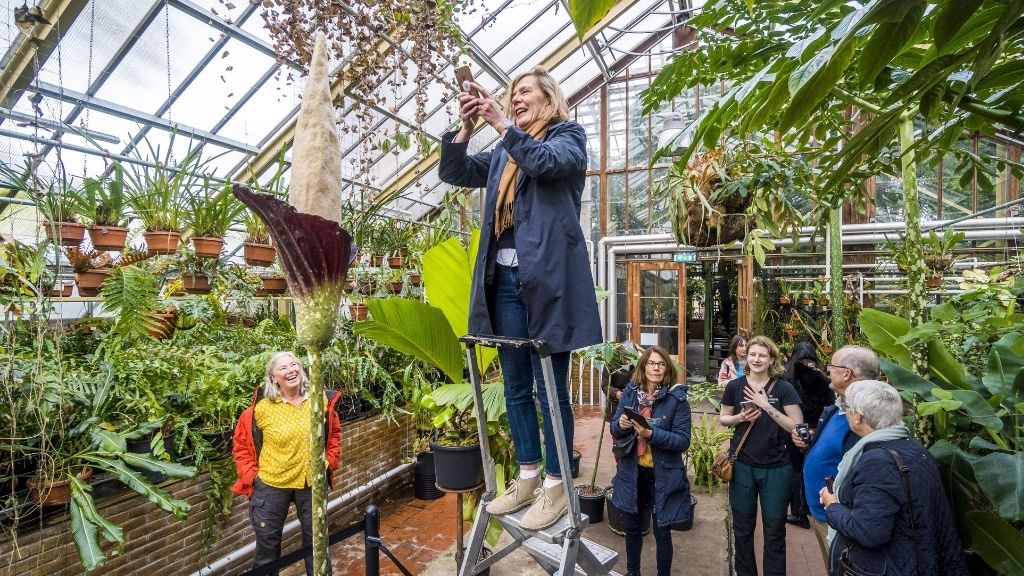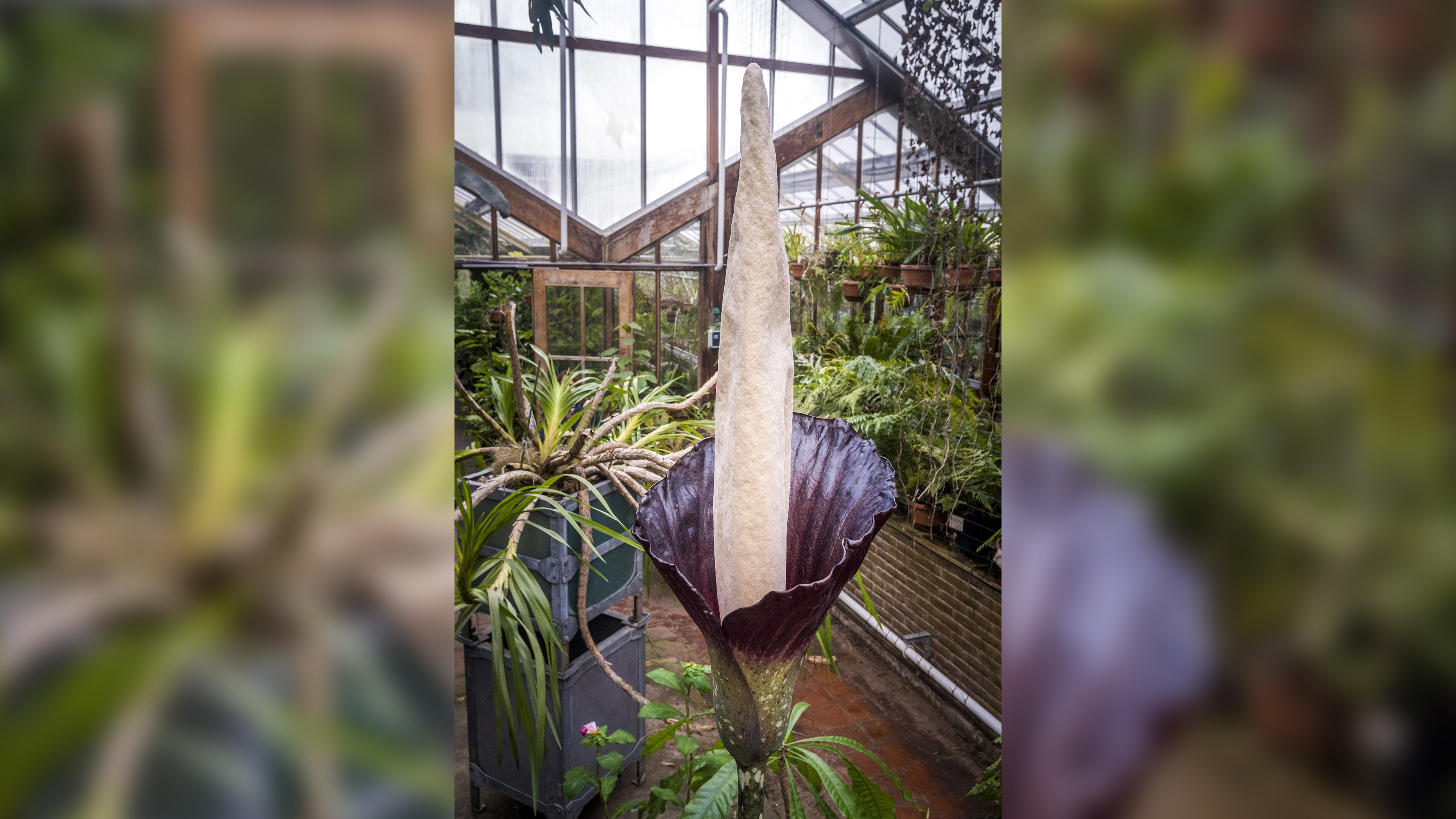Girthy 'penis plant' blooms for the first time, sparking excitement at Dutch garden
It's the size of a human and smells of rotting flesh.

A plant that stands taller than a grown human, reeks of decomposing flesh and looks vaguely phallic recently bloomed in the Netherlands' oldest botanical garden, to the delight of garden staff and visitors alike.
The Amorphophallus decus-silvae, a type of "penis plant," bloomed for the first time last week after about six years of growth, according to a statement from Leiden University, which founded the garden, Hortus Botanicus Leiden, in 1590. Garden volunteer Rudmer Postma originally cultivated the towering plant from a leaf clipping and has diligently tended to it over the years, Dutch newspaper NRC reported. Part of the plant grows underground as a "tuber," and another portion pokes up through the soil, Postma told NRC. In mid-September, the A. decus-silvae sprouted a bud for the first time, indicating that it might soon burst into bloom.
Over the past month, the bud grew to be about 1.6 feet (0.5 meter) tall, and its supporting stem is now 6.5 feet (2 m) long. And last week, the bud finally unfurled, exposing an erect structure standing proudly at its center, according to the Leiden University statement. This white, phallus-like structure, called the spadix, extended upward from a collar of ribbed, purple foliage, known as a spathe. It's the spadix that generates the penis plant's distinct odor, a pungent aroma reminiscent of rotting meat.
Related: Naughty by nature: The most disgusting and deadly flowers
Hortus Botanicus Leiden volunteer Roos Kocken filmed a video of the A. decus-silvae shortly after it bloomed, noting that "it didn't smell very bad yet, but it got more intense in the afternoon." The garden set up a ladder next to the blooming plant so visitors could peer down into its open spathe and experience the spadix's scent at close range.
Like its relative the corpse flower (Amorphophallus titanum), in the wild, the blooming A. decus-silvae uses its stench to draw flies and other pollinating insects into its spathe. The plant then enters the next stage of its growth cycle, during which it starts pumping out pollen in large quantities. This pollen clings to any insects that flock to the stinky flower; after the bloom withers and the stench subsides, the pollen-coated insects buzz off to (ideally) pollinate a nearby A. decus-silvae.
Hortus Botanicus Leiden has just one A. decus-silvae plant, but the garden staff collected and stored the plant's pollen at minus 76 degrees Fahrenheit (minus 60 degrees Celsius), in order to use it to pollinate other specimens in the future and to share some with other gardens, greenhouse manager Rogier van Vugt told NRC.
Sign up for the Live Science daily newsletter now
Get the world’s most fascinating discoveries delivered straight to your inbox.

Very few gardens keep an A. decus-silvae in their collections; in fact, the Hortus Botanicus Leiden's plant is only the third representative of the species to bloom in Europe, van Vugt said in an interview with the Dutch regional broadcaster Omroep West. In the wild, A. decus-silvae grows only in the hot, humid tropical forests of the Indonesian island of Java.
Hortus Botanicus Leiden houses several other plants in the Amorphophallus genus, whose name translates to "shapeless" or "misshapen penis," van Vugt told Omroep West. ("It's a bit of a stupid name," he added, noting that you need "a little imagination" to see the cigar-like spadix as a phallus.)
Incidentally, the species name decus-silvae translates to "glory of the forest" — a name still suggestive of genitalia but perhaps less blatant than the plant's genus name.
The last time a penis plant bloomed in the garden was 1997, but it was a different species to the A. decus-silvae. The recently unfurled A. decus-silvae bloomed for two days, and it may be many years before the plant blooms again, according to the Leiden University statement.
"Blooming costs the underground tuber so much energy that it then has to save for a number of years," van Vugt told NRC. "It can take six or seven years before it is big enough to flower again."
"I'm quite proud," Postma told NRC of the plant's recent bloom. "It is special that we succeeded at all," given that the plant will only bloom under certain conditions, "and I am proud that the plant is doing so well."
Originally published on Live Science.

Nicoletta Lanese is the health channel editor at Live Science and was previously a news editor and staff writer at the site. She holds a graduate certificate in science communication from UC Santa Cruz and degrees in neuroscience and dance from the University of Florida. Her work has appeared in The Scientist, Science News, the Mercury News, Mongabay and Stanford Medicine Magazine, among other outlets. Based in NYC, she also remains heavily involved in dance and performs in local choreographers' work.











